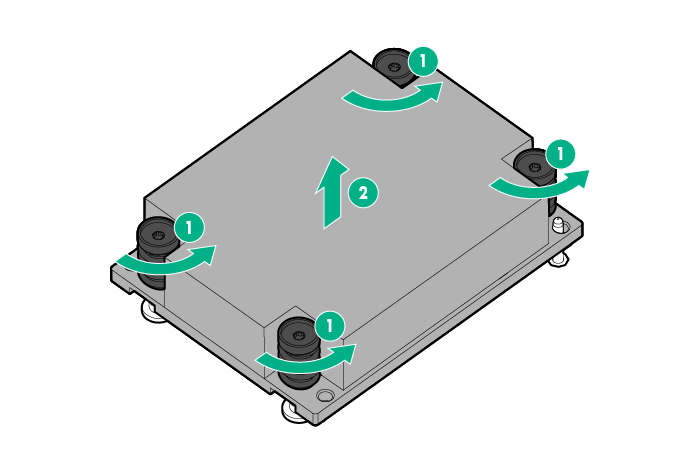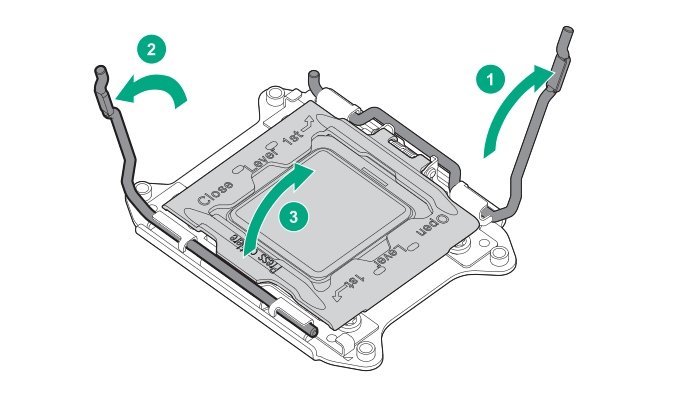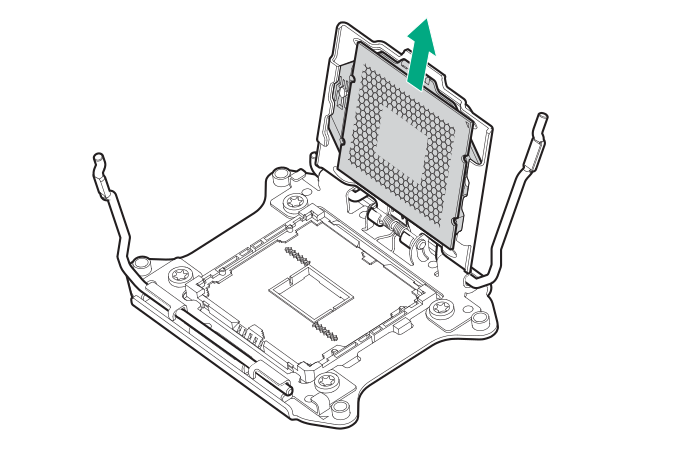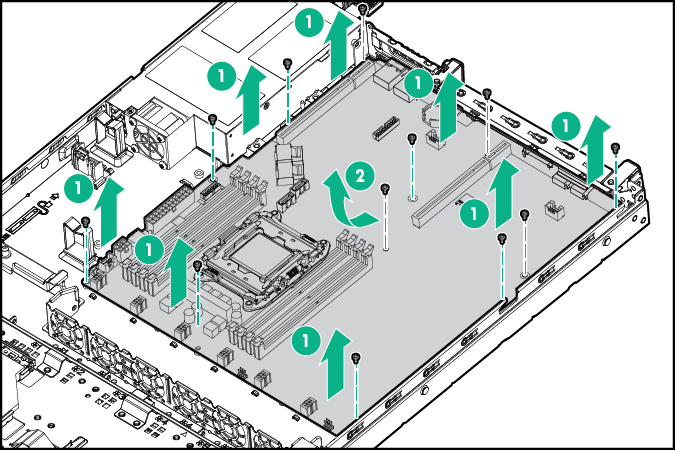Removing the system board
CAUTION: To avoid ESD damage, when removing electrostatic-sensitive components from the failed system board, place the components on a static-dissipating work surface or inside separate antistatic bags.
NOTE: Replace a failed system board with the same model of replacement system board. See the label of the failed system board for the spare part number.



